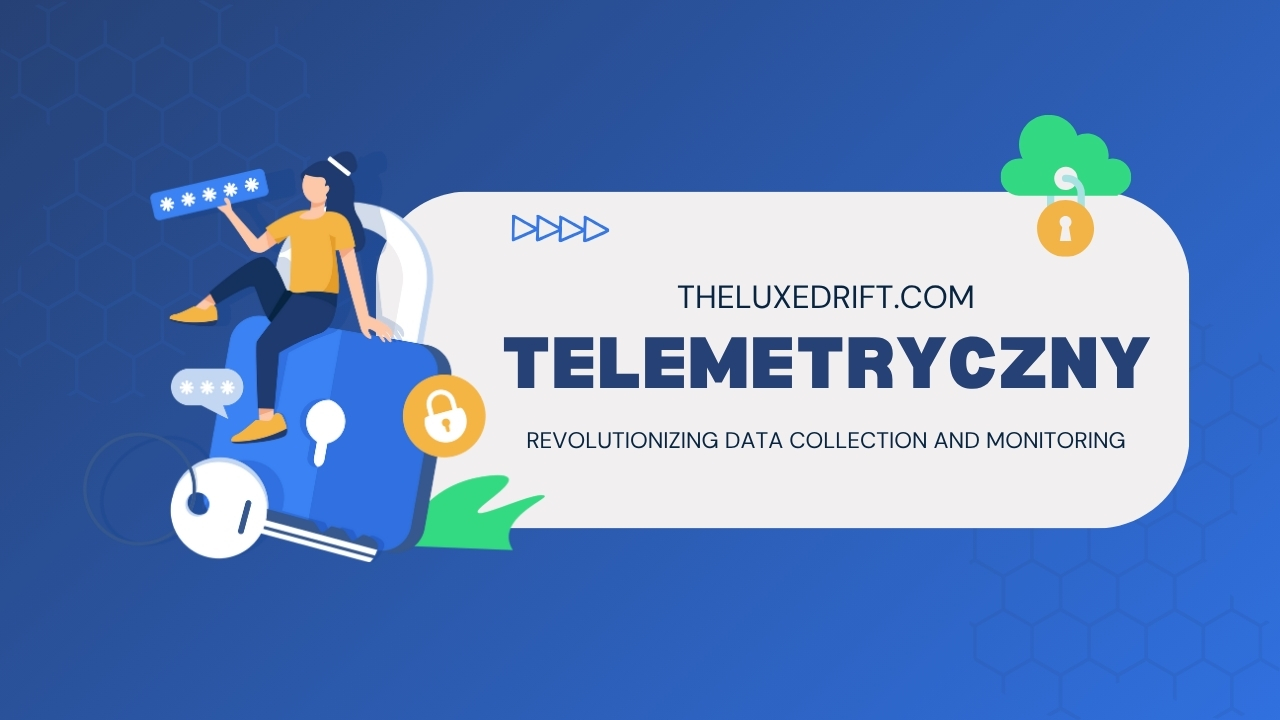In a world where data drives decisions and technology evolves at lightning speed, the need for efficient data collection and monitoring has never been more critical. Enter Telemetryczny—a game-changing approach that is transforming how we gather insights from various systems. Whether you’re in healthcare, manufacturing, or even agriculture, this innovative method promises to streamline processes and enhance operational efficiency. As we dive into the fascinating realm of Telemetryczny, prepare to discover its inner workings, advantages, real-world applications, and what the future holds. Buckle up; it’s going to be an enlightening journey!
What is Telemetryczny and How Does it Work?
Telemetryczny refers to the collection and transmission of data from remote or inaccessible sources to a central system for monitoring and analysis. It involves sensors that capture real-time information, such as temperature, pressure, or movement.
These sensors communicate with software platforms using various connectivity options like Wi-Fi, Bluetooth, or cellular networks. The collected data is then processed and visualized on dashboards that allow users to monitor performance effortlessly.
The beauty of Telemetryczny lies in its automation. Instead of manual logging or tedious data entry, organizations gain instant access to valuable insights. This instantaneous flow of information enables proactive decision-making.
As technology advances, so does the sophistication of telemetry systems. Enhanced algorithms are making it easier to filter noise from useful signals—ensuring only relevant data reaches decision-makers at the right time.
Advantages of Using Telemetryczny for Data Collection and Monitoring
Telemetryczny offers several key advantages for data collection and monitoring. Its ability to gather real-time data is a game-changer. Organizations can access critical information instantly, enabling quicker decision-making.
Another significant benefit is the accuracy of data collected through Telemetryczny systems. Automated processes reduce human error, ensuring that the insights derived from the data are reliable and actionable.
Scalability is another aspect worth mentioning. Whether you’re operating on a small scale or managing large networks, Telemetryczny adapts easily to your needs without compromising performance.
Moreover, it enhances operational efficiency by streamlining workflows. With better visibility into processes, teams can identify bottlenecks and optimize resource allocation effectively.
Cost savings come into play as well. Automating data collection reduces labor costs while minimizing waste throughout operations—a win-win for businesses aiming for sustainability and profitability.
Applications of Telemetryczny in Different Industries
Telemetryczny is making waves across various industries. In healthcare, it allows real-time monitoring of patient vitals. This capability can lead to quicker medical responses and improved outcomes.
In agriculture, farmers use telemetry systems to track soil moisture levels and weather conditions. By utilizing this data, they optimize irrigation schedules and increase crop yields.
The automotive industry benefits as well. Telemetry helps monitor vehicle performance metrics during testing phases. Engineers can make adjustments based on live feedback for enhanced safety and efficiency.
Energy sectors leverage telemetry for grid management. Real-time data collection ensures that energy distribution remains balanced while minimizing outages.
Moreover, in manufacturing, telemetry enables the tracking of equipment health through sensors. Predictive maintenance becomes possible, reducing downtime and lowering operational costs significantly.
Each sector harnesses the power of telemetryczne uniquely to drive innovation forward.
Real-life Examples of Successful Implementation of Telemetryczny
One notable example of successful implementation of Telemetryczny is in the healthcare sector. Hospitals leverage this technology to monitor patients’ vital signs in real-time. This capability not only enhances patient care but also allows for immediate intervention when necessary.
In agriculture, farmers utilize Telemetryczny systems to track soil moisture and atmospheric conditions. By gathering precise data, they make informed irrigation decisions that lead to reduced water consumption and optimized crop yields.
The transportation industry has also embraced Telemetryczny for fleet management. Companies can monitor vehicle performance, fuel efficiency, and driver behavior through constant data collection. This leads to increased operational efficiency and lower costs.
Even smart cities have harnessed the power of Telemetryczny by integrating it into traffic management systems. Collecting real-time data on vehicle flow helps reduce congestion and improve overall urban mobility.
The Future of Telemetryczny and Potential Developments
The future of Telemetryczny is poised for transformative advancements. As technology evolves, data collection methods will grow increasingly sophisticated.
We are likely to see improved integration with artificial intelligence. This will enhance analytical capabilities, providing deeper insights from the collected data.
Moreover, the rise of the Internet of Things (IoT) promises broader application across various devices and platforms. Enhanced connectivity means telemetry can gather real-time information from a multitude of sources.
In addition, increased focus on security and privacy will shape how Telemetryczny operates. Developers will prioritize secure communication channels to protect sensitive information.
As industries continue to embrace remote monitoring solutions, we can expect innovations that make telemetry more accessible and user-friendly. The potential for mobile applications and cloud-based systems could redefine how businesses manage their data flow in everyday operations.
Addressing Concerns and Criticisms Surrounding Telemetryczny
Telemetryczny, despite its many benefits, is not without concerns. Privacy issues often arise when data is collected continuously. Users may worry about how their information is stored and utilized.
Another criticism involves the accuracy of the data. If sensors malfunction or experience disruptions, the integrity of data can be compromised. This raises questions about decision-making based on potentially flawed information.
There’s also a learning curve associated with implementing Telemetryczny systems. Organizations may find it challenging to adapt existing processes to integrate new technologies seamlessly.
Furthermore, costs can be prohibitive for smaller businesses. Investing in sophisticated telemetry solutions might seem daunting for those operating on tight budgets.
Skepticism remains regarding reliance on automated systems over human expertise. Balancing technology with human oversight will be crucial as organizations navigate these challenges while leveraging Telemetryczny’s advantages.
Conclusion
Telemetryczny is paving the way for a new era in data collection and monitoring. Its innovative technology offers numerous benefits, making it an appealing choice across various industries. From healthcare to environmental monitoring, its applications are vast and impactful.
Real-life examples illustrate how organizations have harnessed Telemetryczny to improve efficiency and decision-making processes. As more businesses recognize its potential, we can expect significant advancements in this field.
While some concerns about privacy and data security linger, ongoing developments aim to address these issues effectively. The future of Telemetryczny looks bright as it continues to evolve and adapt to meet the growing demands of modern data practices.
Embracing this cutting-edge solution could very well redefine how industries approach information gathering and analysis moving forward.

